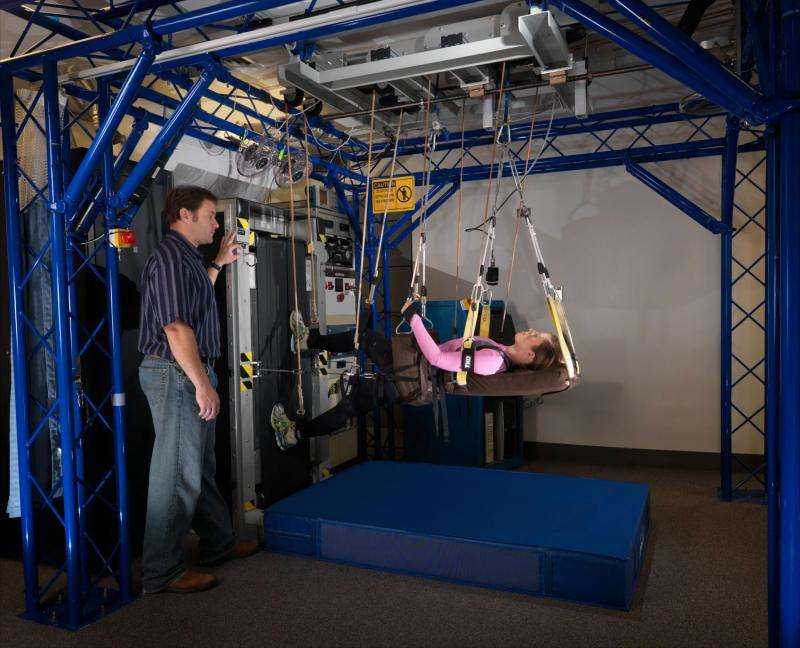I sprint for exercise: NASA's iRAT study

Run far or run fast? That is one of the questions NASA is trying to answer with one of its latest studies—and the answers may help keep us in shape on Earth, as well as in space. Even with regular exercise, astronauts who spend an extended period of time in space experience muscle weakening, bone loss, and decreased cardiovascular conditioning. This is because they no longer have to work against gravity in everyday living.
NASA's Human Research Program Integrated Resistance and Aerobic Training study, known as iRAT, completed recently to evaluate the use of high intensity exercise training to minimize loss of muscle, bone, and cardiovascular function on the International Space Station. To stay healthy in space, astronauts are scheduled to exercise for two and a half hours per day for six days per week. Most, however, exercise seven days per week. They perform both cardio and resistance exercises to keep their muscles and bones strong.
"The theory was that a more stringent regimen of resistance training and interval aerobic exercise would help the astronauts stay fit while on the space station," Dr. Lori Ploutz-Snyder, principle investigator said. "This is of particular importance to future crews who travel to Mars."
The ground study participants remained in a six-degree head-down tilt to simulate the fluids shift of spaceflight throughout the 70 days, even during exercise. A similar study is being performed on astronauts aboard the space station, called Sprint. Both iRAT and Sprint use similar exercise regimens and equipment.
"The cool thing about iRAT is that it is the same exercise prescription in the ground study as it is in flight," said Ploutz-Snyder. "We can make comparisons which help validate the bed rest study as an analog for testing fitness. You can get more subjects faster, control more things, and perform more measurements."
The paper Integrated Resistance and Aerobic Exercise Protects Fitness During Bed Rest written by Ploutz-Snyder, et al, and published by the American College of Sports Medicine (2014) details their theory and how the study was conducted.
To begin the study the participants were randomized into three groups. The first was a control group that did no exercise. The second group exercised daily. The third group, all male, also exercised and was prescribed a daily testosterone treatment. All participants ate a controlled diet of 55 percent carbohydrates, 30 percent fat, and 15 percent protein.
The two groups that exercised adhered to a schedule of weight-training three days a week, and aerobic exercise six days a week. The high-intensity interval aerobic exercise and continuous aerobic exercise were performed on alternating days. The aerobic intervals consisted of maximal or nearly maximal efforts with some workouts as short as 30-second maximal effort sprints on the treadmill. Other workouts were a bit lighter but they all ranged from 70 to 100 percent of max effort.

The study, which concluded in December 2014, was an overall success. Researchers found that, in fact, high intensity interval training combined with weightlifting and a balanced diet does combat muscle atrophy, bone loss, and cardio deconditioning.
This has potential benefit to life on Earth, where hospital-based deconditioning, a huge issue in America, can be lessened or prevented with exercise done from a bed each day. As NASA explores deeper into the solar system, they are learning that faster may indeed be better than farther.
Provided by NASA




















